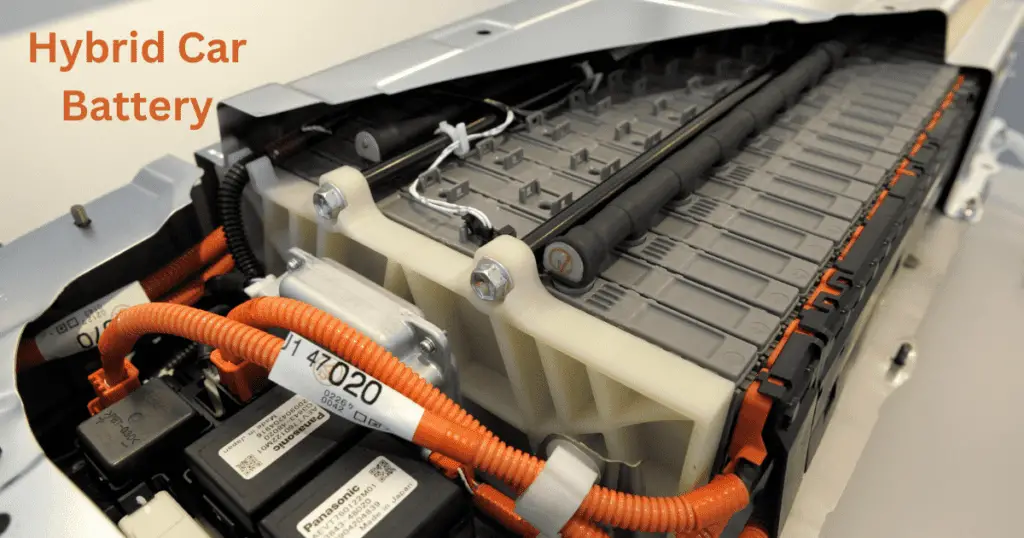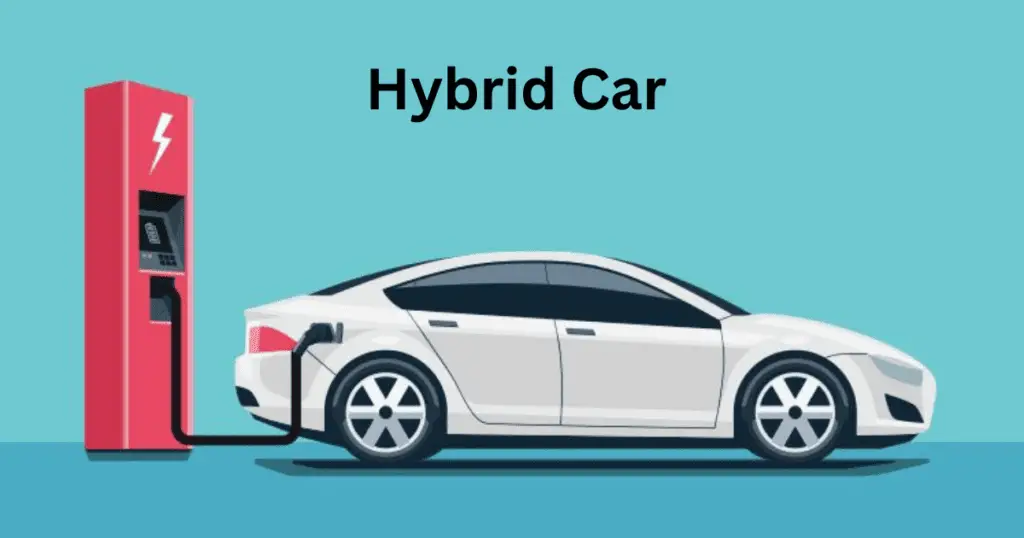Hybrid cars represent the highest level of automotive innovation, blending traditional internal combustion engines with electric power. In a world where sustainability is critical, these vehicles offer a promising solution to reduce carbon emissions without compromising performance. Understanding the intricate details of hybrid car features and their benefits helps individuals make informed choices when considering their next vehicle purchase.
1. Understanding Hybrid Cars
Hybrid cars utilize both an internal combustion engine and an electric motor, combining the strengths of both systems to enhance efficiency. The engine charges the battery while the electric motor assists the engine, reducing overall fuel consumption and emissions. This combination creates a seamless driving experience, transitioning between power sources effortlessly.
2. Hybrid Car Features
Engine and Power System
A key feature of hybrid cars is their dual power system, which combines an internal combustion engine with an electric motor. This fusion of two distinct power sources provides an extensive range of benefits, which I will now investigate here.
Dual Power Dynamics
Hybrid cars take advantage of the collaboration between their internal combustion engine and electric motor, allowing the vehicle to use either power source as needed. This dynamic interaction between the two power systems demonstrates the cutting-edge automotive engineering incorporated into these vehicles.
Advanced Control Units
The interaction of the internal combustion engine and the electric motor is meticulously monitored by sophisticated control units. These electronic brains of the operation ensure that power distribution is optimized to enhance performance and fuel efficiency, creating an exceptional driving experience.
Seamless Power Transition
The flawless transition between power sources is an outstanding feature of hybrid cars’ engines and power systems. This seamless shift between the internal combustion engine and the electric motor happens without any apparent interruption, resulting in a smooth and comfortable ride.
Integrated Regenerative Braking
The interaction between the engine and the electric motor extends to the regenerative braking system, wherein the electric motor seamlessly switches from its propulsion role to regeneration mode when the driver applies the brakes. This innovative process captures energy dissipated during braking, converting it into electricity. Consequently, this not only improves the vehicle’s energy efficiency but also significantly extends the car’s driving range.
3. Regenerative Braking
Regenerative braking is a ground-breaking technology that distinguishes hybrid vehicles from their conventional counterparts. This ground-breaking system goes beyond traditional braking methods, presenting an array of benefits for drivers and the environment alike.
Energy Reclamation
Unlike traditional braking systems, which waste kinetic energy as heat, regenerative braking captures and transforms this energy into electricity. This harnessed energy is then utilized to recharge the car’s battery, significantly enhancing the overall efficiency of the hybrid car.
Extended Electric Range
By converting braking energy into electricity and storing it within the battery, hybrid vehicles can significantly extend their electric driving range. This means less reliance on the internal combustion engine, resulting in decreased fuel consumption and emissions, thus making a positive environmental impact.
Smooth and Controlled Deceleration
Regenerative braking is not only an energy-efficient system but also offers a smoother and more controlled deceleration. This contributes to a more comfortable and enjoyable driving experience as drivers encounter fewer abrupt stops, ensuring a pleasurable journey.
4. Fuel Efficiency
A significant draw of hybrid vehicles lies in their exceptional fuel efficiency, achieved through a range of strategies, including the effective utilization of electric power during slower speeds and in traffic conditions that involve frequent stops and starts.
Utilizing Electric Power at Reduced Speeds
Hybrid cars are intricately engineered to rely on electric power when traveling at slower speeds, a scenario where the internal combustion engine typically exhibits lower efficiency. This intentional design significantly reduces the overall consumption of fuel and diminishes emissions, firmly establishing hybrid cars as a conscientious choice for environmentally-minded consumers.
Elevated Miles per Gallon (MPG)
The integration of an electric motor provides an additional power source, allowing the internal combustion engine to operate with heightened efficiency. This synergy results in an increased miles per gallon (MPG) rating, translating to fewer visits to the fuel pump and considerable savings for vehicle owners.
Emission Reduction
The increased fuel efficiency of hybrid cars leads to a significant decrease in carbon emissions. With lower fuel consumption, these vehicles make a commendable contribution to environmental preservation by diminishing the release of greenhouse gases.
5. Battery Technology
Advanced battery technology is a cornerstone of hybrid car operation, with lithium-ion batteries being the preferred choice due to their exceptional characteristics.
Lithium-ion Battery Advancements
Hybrid vehicles primarily depend on lithium-ion batteries, renowned for their outstanding characteristics. These batteries showcase a remarkable energy density, allowing them to store a significant quantity of energy within a compact and efficient package. This attribute is crucial for ensuring the electric motor operates optimally.
Battery Life Extension
Lithium-ion batteries are praised for their high power. They can withstand a higher number of charge and discharge cycles in comparison to conventional batteries. This extended longevity assures the battery’s continued functionality and reliability over an extended period, thereby contributing to the sustainability of the vehicle.
Efficient Energy Retention and Release
Lithium-ion batteries demonstrate extraordinary efficiency in both preserving and discharging energy. This efficiency plays a pivotal role in the optimal operation of the electric motor, ensuring its ability to deliver the required power whenever necessary.


6. Integration of Advanced Technologies
Hybrid cars stand as prime examples of cutting-edge technology integration within the automotive industry. These vehicles shows a variety of advanced features that substantially enhance their efficiency and overall performance.
Implementation of Start-Stop Systems
A significant number of hybrid vehicles come equipped with start-stop systems, a technological advancement that automatically shuts down the operation of the internal combustion engine when the vehicle comes to a halt, such as at a red traffic signal or in congested traffic. This functionality not only conserves fuel but also reduces emissions during idle intervals, thereby promoting both fuel efficiency and environmental preservation.
Effective Power Management
Hybrid automobiles are outfitted with intricate energy distribution systems that proficiently oversee the flow of power among the internal combustion engine, electric motor, and the battery. This detailed coordination ensures that power is optimally allocated, whether it’s for acceleration, cruising, or participating in regenerative braking.
7. Benefits of Hybrid Cars
Environmental Impact
Reducing greenhouse gas emissions is a pivotal advantage of hybrid cars. Their decreased reliance on fossil fuels translates to lower emissions, thereby contributing to a healthier environment and combating climate change.
Cost Savings
The economic benefits of hybrid cars are noteworthy. With reduced fuel consumption, owners experience substantial savings in fuel costs over time. Moreover, some governments offer tax incentives and rebates for purchasing eco-friendly vehicles.
Performance and Power
Contrary to misconceptions, hybrid cars offer impressive performance. The electric motor’s instant torque complements the combustion engine, providing swift acceleration and a smooth driving experience.
Convenience and Comfort
Hybrid cars provide a seamless driving experience, often equipped with advanced features for comfort and convenience. From smart information systems to advanced safety features, these vehicles prioritize the driver’s comfort and satisfaction.
Government Incentives
Worldwide, governments are proactively encouraging the adoption of eco-conscious vehicles by offering a spectrum of enticements, encompassing tax advantages, reimbursements, and exclusions. These government-backed initiatives help to increase the overall cost-effectiveness of owning a hybrid vehicle.
Conclusion
Hybrid cars seamlessly combine traditional internal combustion engines with electric power, offering an array of innovative features and significant benefits to environmentally conscious consumers. The dual power system, guided by advanced control units and complemented by regenerative braking, maximizes efficiency and extends driving ranges.
These vehicles excel in fuel efficiency by utilizing electric power at lower speeds, reducing emissions, and boasting advanced lithium-ion battery technology. The combination of cutting-edge technologies amplifies performance, with governmental incentives adding an extra layer of appeal, making hybrid cars an effective choice for eco-conscious, economical, and high-efficiency transportation.
Frequently Asked Questions (FAQs)
Q1. Are hybrid cars more eco-conscious compared to traditional vehicles?
Certainly, hybrid cars typically demonstrate a heightened degree of ecological responsibility when compared to traditional counterparts. Their capacity to utilize electric power during slower speeds and in traffic conditions involving frequent stops and starts substantially reduces both fuel consumption and carbon emissions, ultimately making a noteworthy contribution to a more sustainable ecological landscape.
Q2. Can hybrid cars lead to substantial fuel cost savings?
Absolutely, hybrid cars can result in considerable reductions in fuel expenses over time due to their improved fuel efficiency. The utilization of electric power during slower speeds and deceleration decreases the reliance on gasoline, leading to fewer visits to the gas station and significant cost savings for vehicle owners.
Q3. How do regenerative braking systems function in hybrid vehicles?
Regenerative braking mechanisms operate through the harnessing of kinetic energy generated during the deceleration phase of a vehicle, subsequently converting it into electrical power. This harnessed energy is then effectively utilized to recharge the vehicle’s battery, resulting in a substantial enhancement of the overall energy efficiency and a notable extension of the electric driving range for hybrid automobiles. Please rephrase these lines with more unique and uncommon terminology.
Q4. Are there governmental incentives available for the purchase of hybrid cars?
Governments globally often extend incentives to promote the embrace of hybrid vehicles, encompassing tax incentives, reimbursements, and exclusions. These measures are tailored to stimulate the adoption of environmentally-conscious automobiles and render the ownership of a hybrid car financially appealing.
Q5. Do hybrid cars deliver comparable performance to traditional vehicles?
Contrary to common misconceptions, hybrid cars offer impressive performance. The synergy between the electric motor’s instantaneous torque and the internal combustion engine results in swift acceleration and a smooth driving experience, often matching or surpassing the performance of conventional vehicles.

